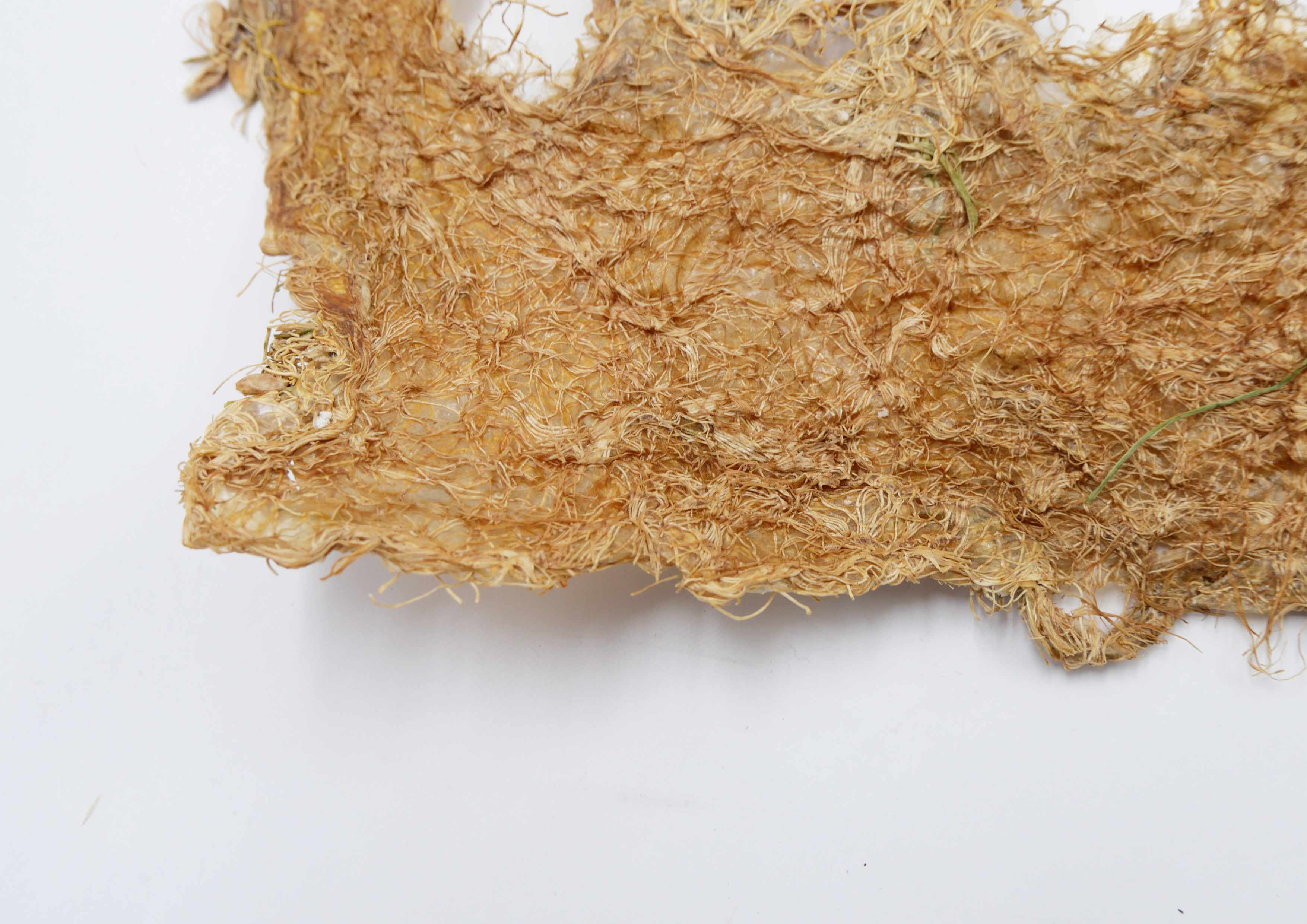WHEATGRASS & BARLEY | Suitable properties¶

WHEATGRASS & BARLEY | Growth characteristics¶
Initially, I planned to work with microgreens which consist of vegetable seeds and legumes. However, these differ in their root structure from grasses and cereals. I was studying the root structures of beans and radishes and grass to map the results. After my initial research, I found that wheatgrass and barley might be the most suitable plant for creating root structures.
Both plants have fast-growing and tightly packed roots. The properties of the materials are influenced by several factors, resulting in different outcomes. The substrate used for growing the plant affects root health as each substrate provides different nutrients. One unique aspect of growing root-based materials is the ability to mold roots into any pattern. The pattern can impact both the user's experience with the material and its mechanical properties. While conducting my research, I also focused on the processing of the residual materials that are produced during the process of harvesting roots, such as grass and seeds. Simultaneously, I described the post-processing methods that can be employed, such as heat pressing, laser cutting, flexibility modification, and the use of natural dyes.

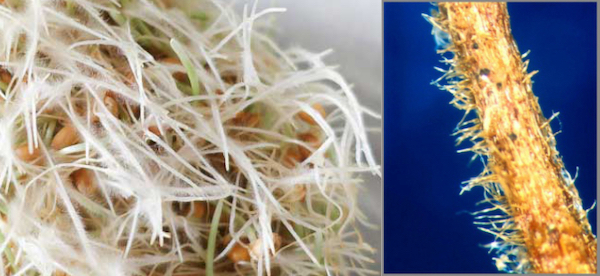
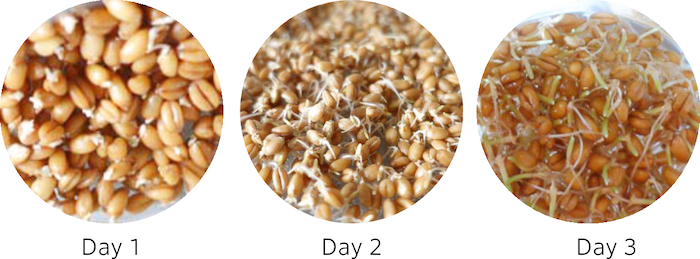
PROCESSES | Designing with plant roots¶
The appearance and characteristics of wheatgrass and barley roots depend on growing conditions. Different growing media, patterns, and environments can be used. I am also interested in various post-processing methods.

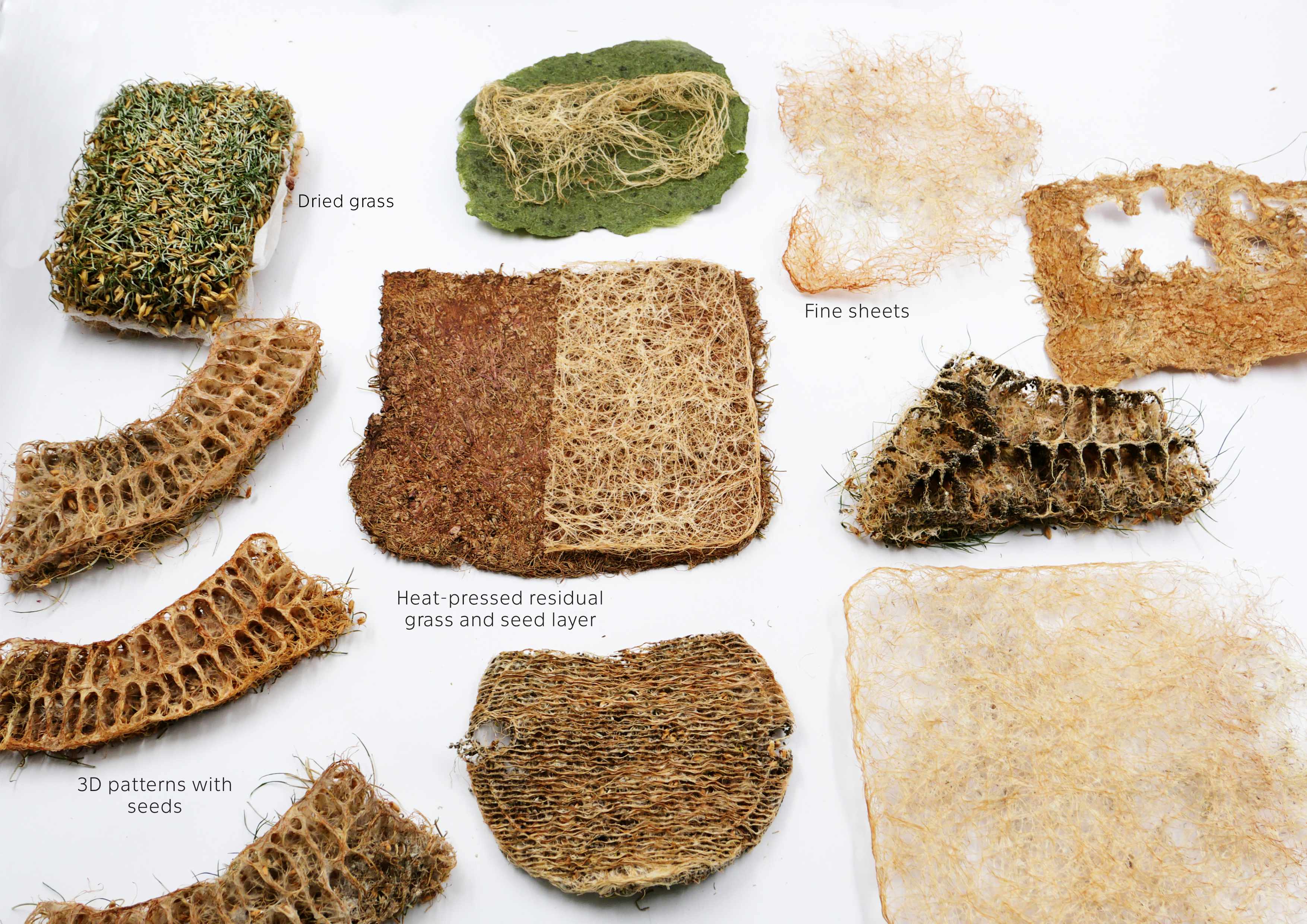
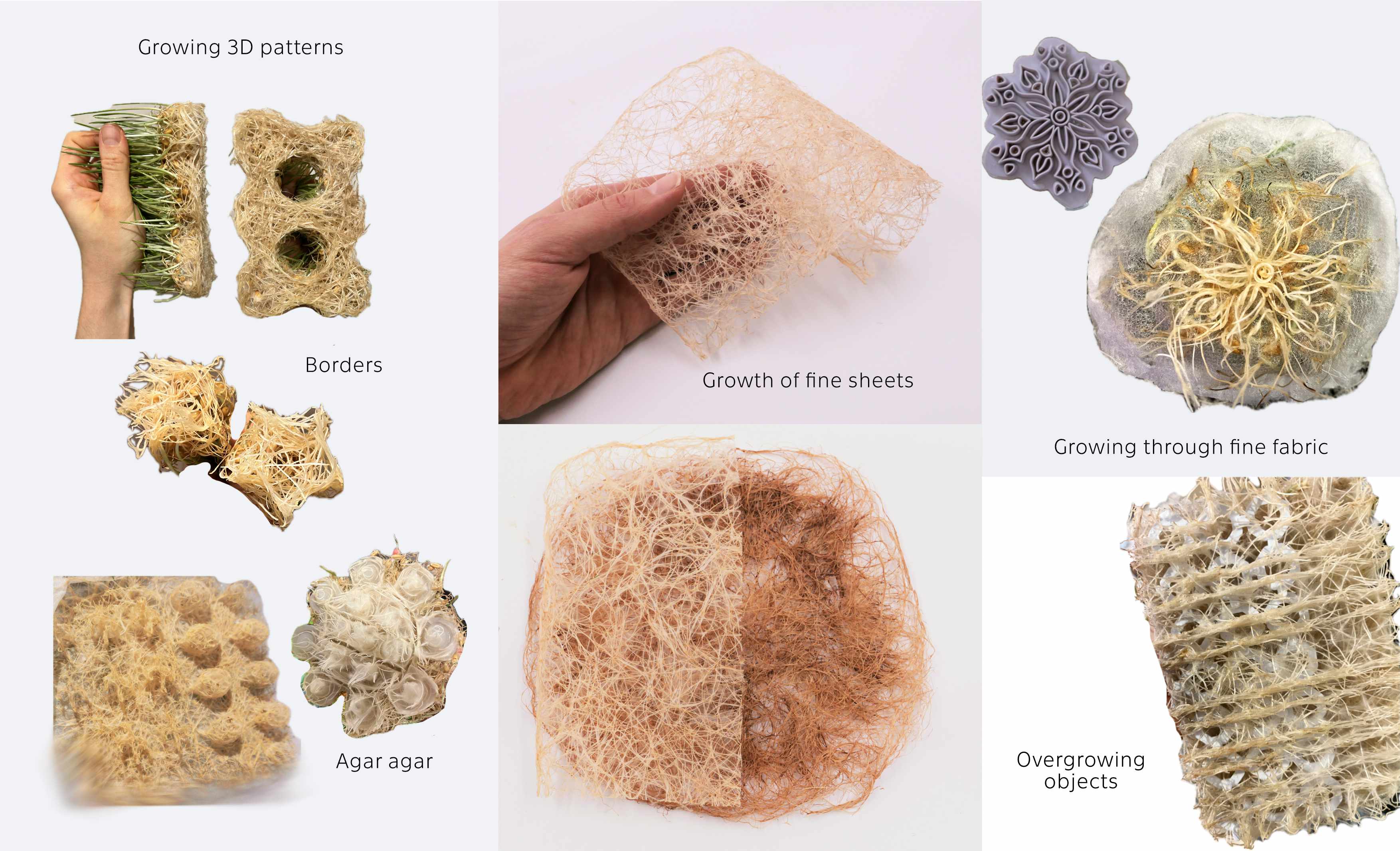
TUTORIAL | How to Grow Wheatgrass¶
This is a simple guide for growing wheat in water. It can be used to create a separate structure of roots or a 3D structure that grows directly in the mold using only water. A more detailed growth procedure is described in the process tab, where we show how to let the wheat grow and combine it with wool.
Recommended growing conditions¶
I used growing lights to cultivate the embroidery within the growing box.
| HUMIDITY | TEMPERATURE | GROWING LIGHTS | Harvesting |
|---|---|---|---|
| 50% - 60% | 20 - 22°C | Moderate light needs: 10-12 hours of light per day, Color temperature: 6,000 K, Growing light | 7-12 cm grass = ready to harvest |
Sanitizing seeds with vinegar¶
Seeds need to be treated against possible pathogens before planting.
1) Prepare the Vinegar Solution: Mix one part white vinegar with three parts water in a clean container. This dilution helps ensure the vinegar isn't too harsh for the seeds.
2) Soak the Seeds: Place the seeds in the vinegar solution and let them soak for about 20 to 30 minutes. This time allows the vinegar to effectively sanitize the seeds without damaging them.
3) Rinse the Seeds: After soaking, thoroughly rinse the seeds with clean water. This step is essential to remove any vinegar residue from the seeds.
4) Dry the Seeds: Spread the seeds out on a clean paper towel or cloth and allow them to air dry completely. Make sure they are completely dry before storing or planting them.
5) Optional Step: If you're concerned about any remaining vinegar residue, you can rinse the seeds again with clean water after they've dried. However, make sure they are completely dry before storage or planting.
6) Storage: Once the seeds are dry, you can store them in a clean, dry container until you're ready to plant them.
How to Grow Wheatgrass¶
∙ Wheatgrass / barley seeds (if possible local)
∙ Water ∙ (Soil & light textile) if you want to incorporate for better nutrition
∙ Tray / moulds
∙ Sprouting glass jars ∙ Mesh / textile
∙ To get started, whether you're doing the soil or soilless version, begin by sprouting the seeds. Rinse the seeds thoroughly and place them in a sprouting container. Cover the container with a mesh and add 1 cup of water. Allow the seeds to soak for 8 hours. ∙ After draining, fill the container with water and invert it to let the water drain through the mesh. Leave the container upside down. Rinse the seeds 2-3 times a day for 2-3 days. Tiny sprouts form within 2-3 days ∙ For soilless wheatgrass, you then spread out your seeds across the mesh (or plastic net) on the bottom of the container and cover with water. Then cover the container with a cloth for the first night to create a warmer, darker area for them to grow. ∙ To grow sprouts, you need to rinse and drain the seeds a couple of times a day to avoid mould. After a few days, the shoots will start growing. By day 8 or 9, they will be ready to harvest. Make sure to keep the container well-ventilated to prevent mould growth and continue rinsing and draining the seeds daily. ∙ As an alternative, you can layer wet kitchen towel at the bottom of your dish, add the seeds, and cover them with clingfilm to create a greenhouse effect for the first few days. However, this method hasn't been tested for its effectiveness in preventing mould growth. If you have had success with this method, please let us know in the comments below.

WHEATGRASS GROWTH IN AGAR AGAR¶
AGAR AGAR jelly-like substance made from red algae, it is more fragile after drying | fine patterns have grown very well and uniformly | better results than coco coir - Agar agar gel seems as a practical medium for plants. It is translucent and the plant decides how much moisture to absorb.
When roots grow in agar, they develop a residual film that enhances load distribution. This creates a solid structure. 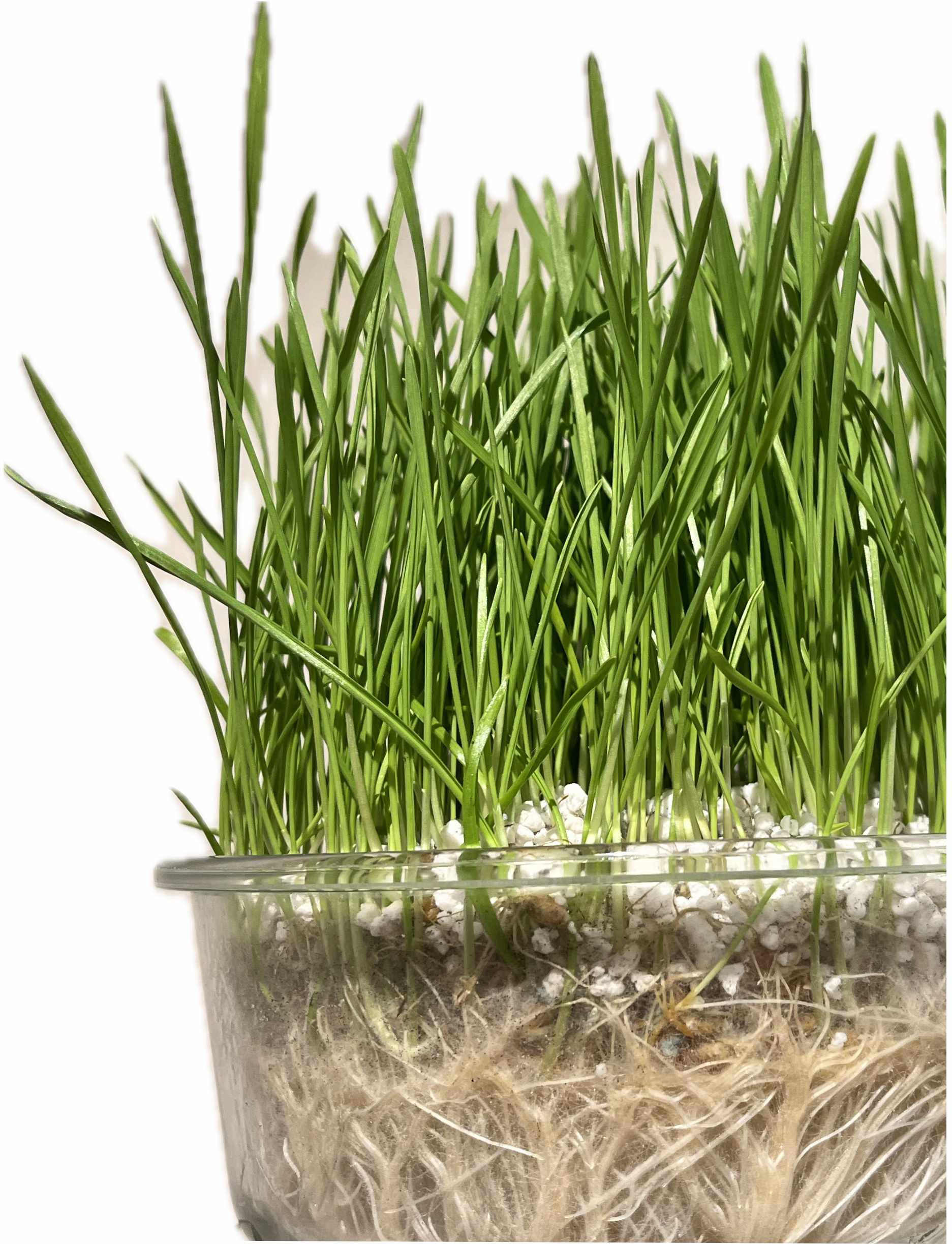
Growth medium preparation
∙ 4g agar
∙ 1l water
∙ Molds
∙ Pots and stovetop
∙ Mixing tools (spatula, cooking spoon, fork)
∙ Spatula or squeegee
∙ digital weighing scale
∙ Measure the ingredients.
∙ Add all in a pot and mix well
∙ Heat the mixture until it starts bubbling while stirring constantly.
∙ Pour mixture into a mold (let it cool for a bit before if the mold is not heat resistant)
∙ Let the material cooldown to jelly consistency
